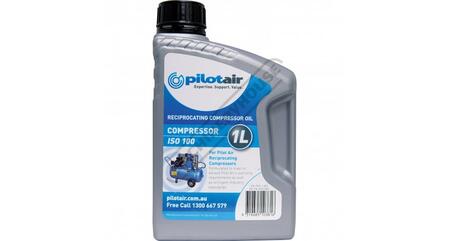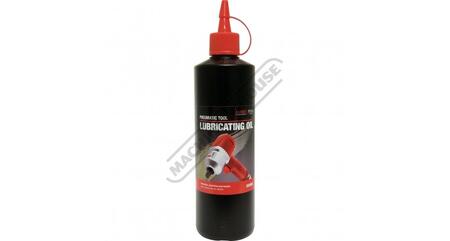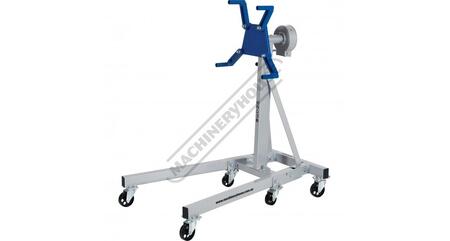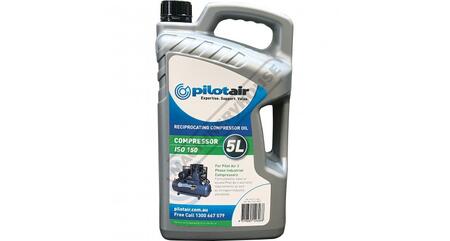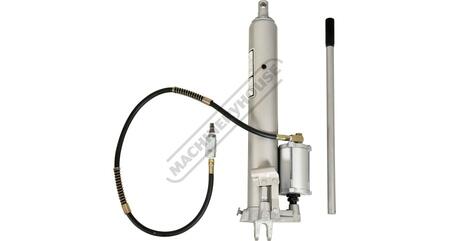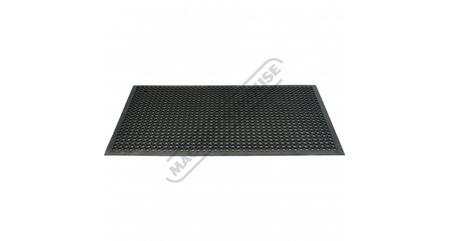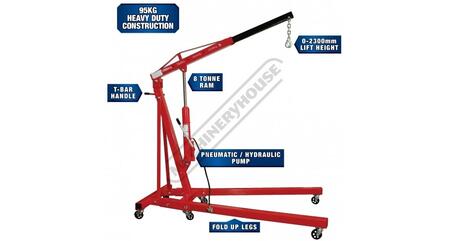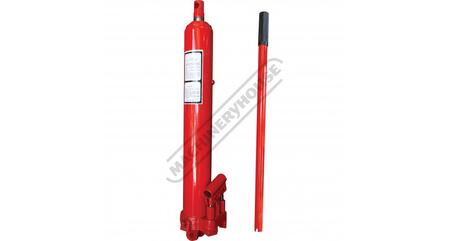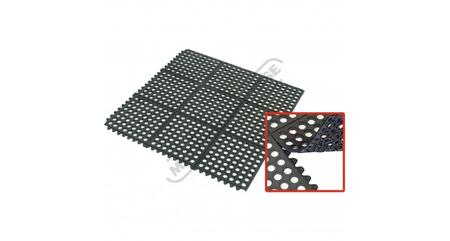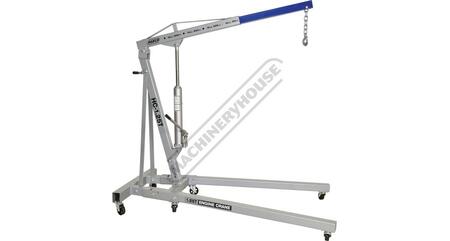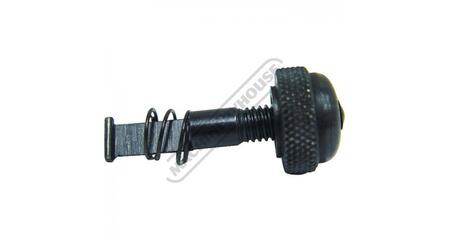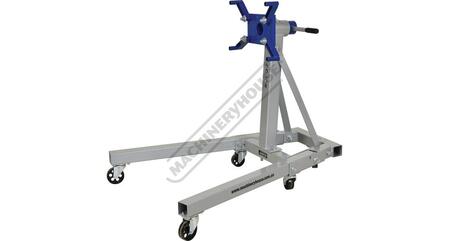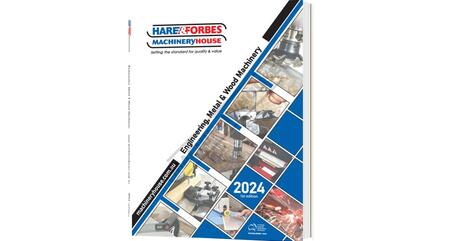L341 Fitting and Machining Technical Book 640 Pages The Definitive "Book of The Trade" for Trainees
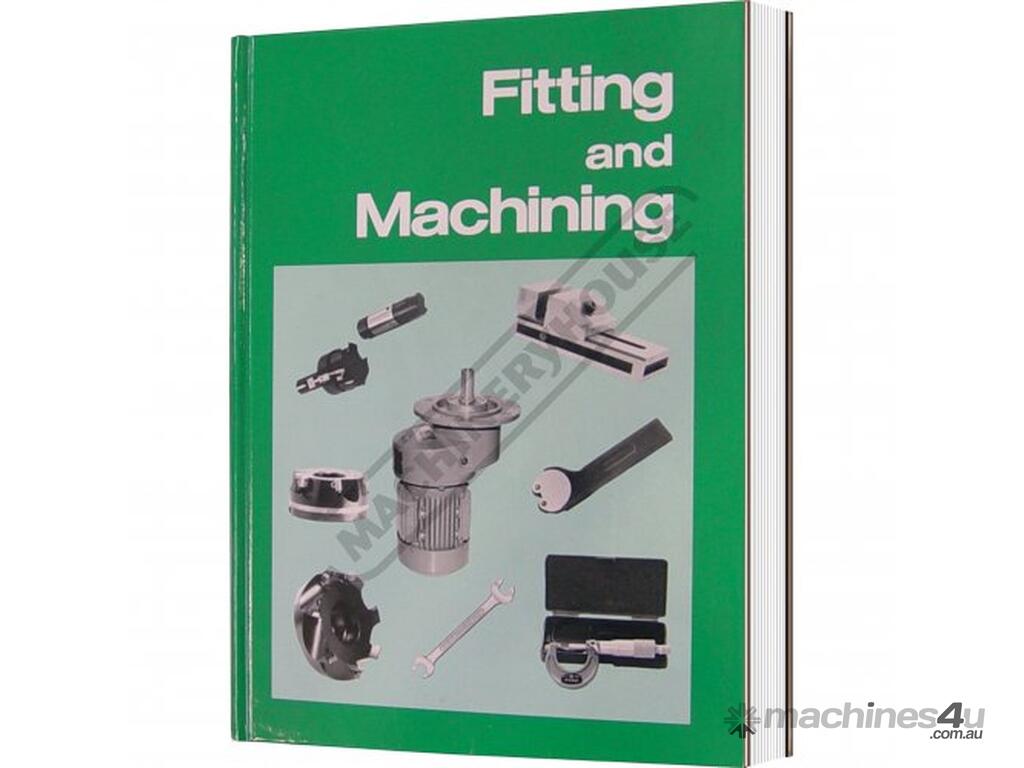
L341 Fitting and Machining Technical Book 640 Pages The Definitive "Book of The Trade" for Trainees : $90 AUD ($99 Inc. GST)
HAFCO L341 Fitting and Machining Technical Book 640 Pages The Definitive "Book of The Trade" for Trainees In Fitting & Machining, Related Area, Qualified Tradespeople & for The Keen Home Hobbyist
CALL NOW AND DO A DEAL! ADD THIS ASSET TO YOUR WORKSHOP
WE OFFER MACHINERY SOLUTIONS AT AFFORDABLE PRICES.
Order Code: L341
Fitting and Machining by Ron Culley published by TAFE publications
The definitive "book of the trade" for trainees in fitting and machining, related area, qualified tradespeople and for the keen home hobbyist. The practical focus, clear explanations and hundreds of diagrams and photographs make Fitting and Machining the most widely accepted text in this area. A comprehensive index ensures the book is easy to use.
This book was first printed in 1957, and has been reprinted with corrections and additions some 13 times since then, the last printing being in 2008.
The contents include the following:
* Useful facts and figures:
o Mathematical signs and common abbreviations
o Conversion factors for common English units
o Conversion table, mm-inch
o Areas and related formulae of plane figures
o Volumes
o Geometrical propositions
o Right-angled triangles
o Trigonometry tables
o Useful tapers and angles
o Machine tapers
o Mechanics - The Principle of Work; Levers; Pulleys and Wheels; Screws; Wedges; Pascal's Law
1. Workshop hints
* General hints
* Metal fret
* Hardening and tempering a small object
* Press fit assembly
* Turning a sleeve bearing
* Chatter
* Setting to marked centre in the lathe
2. Safety in the workplace
* Accidents; Causes; Prevention
* Personal safety; Eyes; Ears; Manual Lifting
* First aid
* Orderly workshop habits; Personal Cleanliness; Horseplay; Industrial Housekeeping
* Workshop safety
* Equipment safety; Hand Tools; Machinery; Electrical Equipment; Ladders; Compressed Air; Cranes
* Fire-fighting; Types of fire
3. Engineering drawing-How to read and use
* Types of drawing; General Arrangement Drawings; Assembly Drawings; Detail Drawings; Drawing Re-issues
* Types of Line-Their Application and meaning
* Projection; Orthopraphic; Isometric
* Sections
* Scales
* Conventional representations, symbols and abbreviations; Representations; Symbols and Abbreviations
* Dimensions; Units used and Placement for Dimensions; Dimensions for Screw Threads; Auxiliary Dimensions;
Chamfers; Dimensions Not to Scale and Breaklines; Tabular Dimensions; Use of Other Markings
* Tolerances; General Dimensions; Screw Threads; Geometric Tolerance Symbols
4. Limits-Fits and tolerances
* Types of fit; Clearance Fits; Interference Fits; Transition Fits; Summary
* Basis for Fits; Individual Measuring; When the Hole is Produced by a Fixed Tool; When Standard Sized Shafting is Used; Summary
* Tolerances; Variations in Size; Inter-changeability of Parts
* Definitions; Standard System of Limits and Fits; Tolerances; Designations of Holes, Shafts and Fits
* Selective Assembly
* Machining Tolerances; Working to Drawings; Working from Tables; Working to Tolerances
* Accuracy of Process, Surface Finish and Tolerance; Surface Finish; Relationship between Surface Finish and Tolerance; Surface Finish, Tolerance and the Machine Process; Special Cases Needing Very Good Surface Finish
* Standards of linear measurement; Direct Standards; Derived Standards
* Geometric tolerances; Selected Use; Specifications on Drawings; Applications of Geometric Tolerances
5. Materials-Metals
* Uses of common metals; Iron; Copper; Lead; Zinc; Aluminium; Nickel and Chromium; Tin
* Ferrous metals; Cast iron; Steel; Alloy steels
* Non-ferrous metals; Copper and Copper Alloys; Nickel and Chromium Alloys; Nickel-chromium Alloys;
Aluminium and Aluminium Alloys; Magnesium and Magnesium Alloys; Titanium and Titanium Alloys; Zinc and Zinc Alloys
* Bearing materials; Friction and Wear; Properties of Bearing Materials; Selection of Bearing Material; Some Fitting and Machining Book By Ron Culley (L341) Common Bearing Materials
6. Materials-plastics
* Synthetic rubbers
* Applications of some common plastics
* Properties and uses of thermoplastics
* Properties and uses of thermosetting materials
7. Heat treatment
* Metals; Structural Changes in Iron on Heating and Cooling; Ferrous Metals in use today
* Tool steels; Schedule of Tool Steel Composition
* Heat treatment of steels; Features Determining Successful Heat Treatment
* Heat treatment of tool steels; Heating of Austenitize; Quenching, to Harden; Tempering
* Constructional steels; Group 1 steels; Group 2 Steels
* The Heat treatment of Non-ferrous metals; The Hardening of Non-ferrous Alloys by Heat Treatment
* Useful books for reference
* Glossary of terms
8. Cutting fluids
* Functions; Cooling; Lubricating; Chip Removing; Preventing Corrosion; Additional Properties
* Types; Alkaline Solutions; ‘Soluble' Mineral Cutting Oils; Oilless Cutting Fluids; ‘Straight' Cutting Oils
* Using cutting fluids; Flow and Temperature; Choosing a Cutting Fluid; Method of Supply; Application; Filtering, Sterilising and Reclaiming; Care of Electrical Equipment
9. Lubricants
* Types; Lubricating Oils; Greases
* Applying lubricants; Methods; Frequency of Application
10. Cutting speed and feed rate
* Cutting speed; Cutting Speed and Tool Life; Factors Affecting Cutting Speed; Cutting Speed and r.p.m.
* Feed rate; Factors Affecting Feed Rate; Feed Rate Recommendations
11. Cutting tools
* General principles; Orthogonal Cutting; Inclined Cutting
* Cutting tool angles: Normal rake; Inclination; Direction of Cutting; Approach Angle and Side Cutting-edge Angle; End Relief Angle; Nose Radius; Clearance Angles
* Guide to the selection of lathe tools
* Cemented carbide tools; manufacture; Classification; Selection of Insert; Tool Design and Type of Clamping; Operating Conditions and Tool Life; Tool Failures and Remedies
* Tools made from other materials; Cemented Oxide Tools; Diamond Tools; Comparing Tool Materials
12. Benches and bench vices
* Benches; Types; Construction; Position of the Bench; Tidiness
* Engineers' vices; Types; Location of the Bench Vice; Special jaws; Care and Use of the Vice
13. Fasteners
14. Screw threads
* Uses
* Screw thread terms
* Common V-thread forms; ISO metric; Whitworth; British Association; Unified; V-thread calculations; Screw Thread Table
* Square-thread forms; Acme-thread forms; Trapezoidal-thread forms; Buttress-thread forms; Worm-thread forms
15. Hand tools
* Files; Parts of a File; Classification; Using a File; Testing Filed Surfaces; Filing a Square Hole; Filing a Square on a Shaft; Care of Files; Files for Use Under Special Conditions
* Chisels and chipping; Common Types; Cutting Angles; Using a Chisel
* Spanners; Types
* Wrenches; Pipe wrenches
* Pliers; General purpose; Cutting; Circlip
* Tinsnips; Hacksaws; Keys; Screwdrivers; Hammers; Punches; Wheel or bearing pullers; Pop riveting tools; Clamps
16. Drills and reamers
* Drills; Types; Accessories; Nomenclature; Operation
* Reamers; Types; Nomenclature; Tolerances; Operation Of Reamers Sharpening; Storage
17. Threading tools
* Taps and dies; Tap range; Sets of Taps; Nomenclature; Sharpening; Using a tap
* Screw extractors; Tap wrenches
* Dies; Adjustable Button Dies; Die Nuts; Using a Die
18. Work-holding methods
* Holding workpieces on machines
* Clamping principles; Clamping Devices; Application of Force; Height of Packing; Position of Clamps; Thickness of Clamps; Use of Washers; Number of Clamps and Stops
* Types of clamps and accessories; Clamps for Machining; Machine Vices; General Purpose Clamps
19. Marking and measuring tools
* Scribers; Using a Scriber
* Dividers; Hermaphrodite calipers; Trammels
* Surface gauges; Types; Setting; Using; Uses
* Punches; Parallel strips; vee blocks; Angle plates; Screw jacks; Steel rules
* Micrometers; Outside Micrometer Calipers; Inside Micrometer Calipers; Micrometer Depth Gauge; Screwthread Micrometers; Care of a Micrometer
* Verniers; Principle of a Vernier; Vernier Calipers; Vernier Height Gauges
* Calipers; Taking a Measurement
* Straight edges
* Try squares; Testing a Try Square; Using a Try Square; Care of the Try Square
* Combination set; Toolmakers square
* Protractors; Vernier Protractors
* Box square and keyseat clamps
* Bevel gauges; Using a Bevel Gauge
* Depth gauges; Telescoping gauges; Small hole gauges; Screw pitch gauges; Centre gauges; Feeler gauges; Radius gauges; Toolmakers buttons; Centre finder and wiggler
* Indicators; Lever Indicators; Dial Indicators; Care of Indicators
20. Introduction to precision measurement
* Systems of measurement
* Errors in workshop measurement; Common Sources of Error
* Comparative measurement; Use of a Dial Gauge; Use of a Floating Carriage Micrometer
* The use of gauge blocks; Composition of Gauge Sets; How to Use Gauge Blocks; Accuracy; Accessories; Using an Optical Flat to Test Flatness of Gauge Blocks
* Use of length bars
* Use of balls, rollers and discs in precision measurement; Checking External Tapers; Checking Internal Tapers; Checking Small Internal Tapers; Checking Dovetail Slides; Checking Taper Angles
* Use of sine bars in precision movement; Construction; Principle and Application; Accuracy of Sine Bars; Sine Centres
* Use of spirit levels in precision measurement; Construction and Use; Reading a Level
* Use of clinometers in precision movement; Mechanical Clinometers; Optical Clinometers
* The digital readout system
21. Operational planning
* Planning machining operations; Importance of Planning; Information Needed; Planning Procedure
22. Principles of marking out work
* Purpose of marking out
* Types of line; Datum Lines; Centre Lines; Outlines
* Tools and equipment
* Marking-out procedure; Inspection Before Marking Out; Preparing the Work
* Permanent establishment of lines
23. Cut-off machines
* Power hacksaws; Reciprocating Hacksaw; Automatic Bar-Feed Reciprocating Hacksaw
* Horizontal band saw
* The abrasive cut-off saw
* The friction saw
* The cold circular saw; The Blade
24. The vertical handsaw
* Description; Machine Capacity
* Operating the band saw; Drive System; Job Selector; The Table; Installing the Blade
* Attachments
* Welding blades; Welding Operating; Annealing Operation
* Selection of blades; Pitch of Teeth; Blade Size
25. Drilling machines
* Types of drilling machine; Bench Drill; Pillar Drill; Radial Drill; Multi-spindle Drill
* Setting up and holding work; Using a Machine Vice; Clamped to the Machine Table; Clamped to an Angle Plate; Clamped on vee blocks
* Drilling a hole to marking out
26. Centre lathes
* Units of a centre lathe; The Bed; The Headstock; The Tailstock; The Saddle or Carriage; Feeding Mechanism
* Facing and boring lathes
27. Capstan and turret lathes
* General features and uses; Capstan Lathe; Turret Lathe
* Parts of a capstan or turret lathe; The Mid-saddle; The Headstock; Stop Systems; Bar Feed Mechanism
* Work-holding methods; Bar Feed Work; Chuck Work
* Cutting methods; Single Cutting Operations; Multiple Cutting Operations; Combined Cutting Operations
* Cutting tools; Turret Tools; Mid-saddle Tools
* Setting an operations sequence
28. Lathe operations-Turning
* Mounting and removing chuck, faceplate, driving plate and centre; Fitting the Chuck, Faceplate and Driving Plate; Remove the Chuck, Faceplate and Driving Plate
* Chuck work; Four-jaw Independent Chuck; Three-jaw Self-centering Chuck
* Faceplate work; Methods of Holding Work
* Turning between centres; General Description; Types of Lathe Centre; Centre Drilling; Aligning Lathe Centres; Setting the Workpiece Between Centres
* Setting the cutting tool; Overhang and Rigidity; Height of Cutting tool; Setting the Approach Angle
* Turning a stepped spindle; Turning the Diameters; Turning the Lengths
* Taper turning; Using a Form Tool; Using the Top-Slide; Using a Taper Turning Attachment; Taper Turning by Off-setting the Tailstock
* Form turning; Free-hand Form Turning; Form Turning with Tools
* Drilling in the lathe
* Threading with taps and dies; Using Taps with a Centre Hole; Tapping Using Small Taps; Threading with a Button Hole Die; Threading with Hand Dies
* Boring operations; Uses; Types of Tool; Shape of the Tool; Boring a Parallel Hole; Boring a Tapered Hole
* Reaming in the lathe; Work Preparation; Using a Machine Reamer; Using a Hand Reamer
* Knurling; Knurling Tools; Method of Use
* Parting off; Holding the Work-piece; Parting-off Tools; Procedure
* Work requiring steady rests; Fixed Steady Rest; Travelling Steady Rest; Problems with Unstable Work
* Work requiring use of mandrels; Mandrel use; Types
* Copy turning; Methods; The Hydraulic Attachment; Elements of Copy Turning; Masters; The Cutting Tool; Holding and Driving the Work; Setting Up; General Comments
29. Lathe operations-Setting up and cutting threads
* Preparing the blank
* Preparing the lathe; Setting Up the Machine; Metric Pitches from Inch-based Lead Screws; Gear Settings for Non-metric Threads
* Grinding the screw-cutting tools; Tool Shape and Angles; Grinding the tool
* Setting the tool; Requirements; Procedure
* Registering the screwing tool; Tool Register
* Cutting external threads; Setting the Speed; Thread-cutting Methods; Cutting the Thread; Finishing Thread Ends
* Cutting internal threads; The Blank; Setting the Machine; Tool Sharpening and Setting; Cutting the Thread
* Multiple-start threads; Some Characteristics; Applications; Change Gear Calculations; Sharpening Tools; Setting Up the Tool; Indexing the Starts
* Worm gears
30. Vertical boring machines
* General features; Size; Additional Features; Types
* Parts of a vertical boring machine; The Bed; The Work Table or Chuck; The Cross-rail; The Toolhead; The Tool Blocks
* Use of vertical boring machines; Advantages; Machining Techniques; Types of Cutting Tool
31. The Shaping machine
* Construction and operation; Classification; Column-type Crank
* Methods of holding work; In the Vice; On the Table; In vee blocks; On Angle Plates
* Operating the machine; Setting the Stroke Length; Positioning the Stroke; Setting the Speed; Setting the Cut; Setting the Feed; Shaping the work
* Basic Shaping Operations; Square and Parallel Surfaces; Squaring the Ends; Shaping a Vertical Surface; Horizontal and Vertical Shaping; Shaping Angular Surfaces; Shaping a V-block; Shaping a Dovetail Slide
32. The slotting machine
* Construction and operation; Classification ; General Purpose Slotting Machine
* Basic slotting operations; Holding the Work-piece; Slotting a Parallel Key-way; Slotting a Tapered Keyway; Cutting an Internal Slot; Slotting a Large Internal Cavity; Straight and Circular Slotting
33. The planing machine
* Construction and operation; Classification; Double Housing Planing Machine
* Holding and setting work; Checking the Machine; Holding the Work
* Basic planing operations; Planing Horizontal Surfaces; Planing Vertical Surfaces; Planing Horizontal and Vertical Surfaces; Planing an Angular Surface
34. Milling machines
* The knee-type mill; Plain Milling Machine; Universal Machine; Vertical Machine
* Bed-type mills; Types of arbors and adaptors; Plain Arbor; Shell End Mill and Face Mill Arbor; Adaptors;Direct Mounting of Cutter to Spindle
* Types and uses of cutters; Types of Cutter
* Milling cutter design; Milled Type Teeth; Form-relieved-type teeth; Cemented Carbide Cullers; Inserted Tooth Cutters
* Methods of milling; Normal or Up-Cut; Climb or Down-Cut; Application to End Milling
* Mounting the cutter; Arbor-type Cutters; Shank-type Cutters
* Cutting speeds and feeds; Speeds; Feeds
* Method of holding work; On the Machine Table; In a Vice; In a V-block; In an Indexing Head
* Milling machine attachments; Vertical Attachment; Universal Attachment; Slotting Attachment; Other Attachments
* Care and use of cutters and equipment; Cutters; Equipment and Machine
35. Milling operations 1
* Flat surfaces; Work Held in a Vice; Held on a Machine Table
* Milling key-ways
* Milling a T-slot; The Cutters
* Straddle milling; The Cutters
* Gang milling; The Cutters
* Indexing; Types of Head; Parts of a Universal Head; Methods of Indexing
36. Milling operations 2
* Spiral or helical milling; Principle; Drive; Calculating Lead; The Helix; Checking the Change Gear Assembly; Selecting the Cutter; Setting the Machine-Table; Setting the Cutter; Cutting Helical Flutes
* Milling sides and end flutes; Holding the Work; Selecting the Cutter; Setting the Indexing Head; Culling the Flutes
* Copy milling; The Model; Copy Milling Machines; Setting the Work; The Pantograph Machine
37. The horizontal boring and milling machine
* Types of machine; Floor Type; Table Type
* Features of construction; The Bed; The Column; The Spindle Head; The Universal All-angle Milling Head; The Facing and Boring Head; The Carriage; The Boring Stay; Positioning
* Basic machining operations; Boring; Facing; Turning; Machining holes
* Special advantages of the horizontal boring machine
* Care of the machine
38. Types and elements of gearing
* Applications of toothed gearing; Application to Parallel Shafts; Application to Crossed Shafts in Parallel Planes; Application to Intersecting Shafts
* Gear tooth profile; Development of Involute Curves
* Gear terminology; For Spur Gears; For Helical Gears; Terminology for Worm Gearing
* Gearing systems; ISO metric 20 degrees Involute; British Standard 20 degrees Involute; American Standard 14 1/2 degrees Full Depth Involute; American Standard 20 degrees Full Depth Involute; American Standard 14
1/2 degrees Composite; American Standard 20 degrees Stub Tooth Involute; Summary of Gear Systems
* Relationship between Metric Module Pitch, Diametral Pitch and Transverse Pitch; Metric Module System; Diametral Pitch System; Transverse Pitch System
39. Cutting of gears by the milling process
* Cutting a spur gear; Preparation of the Blank; Selecting the Cutter; Mounting the Cutter; Setting Cutter to
Depth; Application of Simple Indexing; Cutting Spaces to Form Teeth
* Cutting a short spur rack; Holding the Work; Setting the Cutter
* Cutting a long spur rack; Holding the work; Holding the Cutter; Indexing the Flutes
* Cutting a helical gear; Effect of Helix Angle; Calculations; Setting up and Cutting
* Cutting a short helical rack; Holding the Work; Setting the Cutter; Indexing the Teeth; Cutting the Teeth; Cutting a Worm
40. Grinding wheels
* Wheel markings; General Marking System
* Selecting the grinding wheel; Features to be Considered
* Wheel mounting, balancing and trueing; Inspection; Mounting; Balancing; Trueing and Dressing
* Safe Use of Grinding Wheels; Safety guide; Care and storage
* Other abrasives; Oil Stones and Hone Stones; Coated Abrasives; Dressing Sticks; CBN Grinding Wheels; Diamond Grinding Wheels
41. Off-hand grinding
* Mounting the wheel
* Other wheels
42. Surface grinding
* Surface grinding machines; Horizontal Spindle Machines; Vertical Spindle Machines; Comparison of Finish
* Wheel selection and care; Choice of Wheel; Trueing the Wheel
* Grinding allowance
* Work-holding methods; Magnetic Chucks; Clamps; Vices; Angle Plates; Fixtures; Specially Designed Magnetic Fixtures
* Grinding of the surface; Plane Surfaces; Angular Surfaces; Recesses; Formed Surfaces
* Problems with surface grinding; Grinding Thin Work
43. Cylindrical grinding
* Cylindrical grinding machines; Plain Grinders; Universal
* Work preparation and holding; Grinding Allowance; Work Centres; Work Holding
* Grinding a spindle parallel; Operating the Machine; Preparing the Wheel; Setting up the Work; Setting up the Machine
* Grinding a shoulder; Grinding to a Shoulder; Grinding the Shoulder
* Taper grinding; By Swivelling the Table; By Swivelling the Workhead; By Swivelling the Wheel-head; By Plunge Cut Grinding
* Form grinding; Plunge Cut
* Internal grinding; Attachment; Types of Machine; Mounting the Work; Wheel Selection and Care; Grinding a Parallel Bore; Grinding a Taper Bore
44. Tool and cutter grinding
* Tool and cutter grinding machine; Principal Features; Mounting the Wheel; Grinding Square and Parallel Surfaces
* Grinding angular surfaces on cutting tools and gauges; Grinding Angular Surfaces; Compound Angles
* General information about grinding milled tooth cutters; Grinding Wheel Shapes; Milled Tooth Cutters; Form-relieved Cutters; Need for Sharp Cutters; Clearance Angles for Milled Cutters; Holding the Cutter; Methods of
Grinding Clearance Angles
* Grinding straight-tooth milling cutters; Requirements; Holding the Cutter; Preparing the Grinding Wheel; Locating the Tooth Rest; Grinding the Teeth
* Grinding helical flute milling cutters; Requirements; Holding the Cutter; Preparing the Grinding Wheel; Locating the Tooth Rest; Grinding the Teeth
* Grinding side or end teeth on cutters; Requirements; Holding the Cutter; Setting the Workhead; Locating the Tooth Rest; Grinding the Teeth
* Reconditioned milled cutters; Grinding the Tooth Face and Gullet; Grinding the Clearance Angles
* Grinding form-relieved milling cutters; Requirements; Holding and Setting the Cutter; Grinding the Tooth Face; Sharpening Hobs; Sharpening Form-relieved End Mills
* Grinding reamers
* Sharpening taps
45. Centre less grinding
* Introduction
* Basic types of grinder
* Design of the grinder; Grinding-wheel Bearings; Regulating-wheel Bearings; Work rest Blade; Slides and their Feed Devices; Dressing Devices; Balancing the Grinding Wheels; Grinding and Regulating Wheels
* Technique of centreless grinding; Through-feed Grinding; In-feed Grinding
46. Honing and Lapping
* Honing; Lapping
47. Economical use of machine tools
* Introduction
* Action of a cutting tool; Shear Angle
* Life of a cutting tool; Tool Failure; Factors Affecting Tool Life
* Use of available power
* Power requirements for turning operations
* Economical machining using high-speed steel
* Economical use of the milling machine; Calculations
48. Fitting
* Fitting of mating parts; General Principles for Fitting Accurate Mating Parts; Fitting a Fixed Feather Key; Fitting a Tapered Key
* Scrapers and scraping; Purpose; Types and Uses; Scraping Flat Surfaces; Scraping Curved Surfaces
* Friction; Efficiency; Methods of Reducing Friction; Frictional Values for Metals in Contact; Types of Friction
* Bearings; Bearing Loading; Types of Plain Bearing
* Oil seals, packing and joints; Oil Seals; Glands and Reciprocating Seals; Packing; Jointing
* Setting up machines; Levelling; Spindle Bearing Adjustments; Slide Adjustments
* Thread repair kits
49. Keys, key ways, splines and pins
* Keys and key-ways; Sunk Key; Sliding Key Retained in Wheel; Woodruff Key; Saddle Key; Scotch Key; Key Proportions
* Splines; Pins
50. Ball and roller bearings
* Bearing designations; Supplementary Designations
* Bearing checks during operation
* Inspection during non-operation
* Dismounting bearings; Interference Fit on Shaft; Interference Fit in Housing; Bearings Mounted on Sleeves; Inspecting Dismounted Bearings
* Bearing damage
* Mounting bearings; Interference Fit on Shaft; Interference Fit in Housing; Cylindrical Roller Bearings; Taper Roller Bearings; Bearings on Sleeves; Applying Lubricant; Test Running
* Lubrication instructions; Grease Lubrication; Oil Lubrication
* Mounting and dismounting tools; Hydraulic Tools; Mechanical Tools
* Fits and tolerances for shaft and housing
* Abutment and fillet dimensions
51. Power transmission
* Line shafts
* Flat belts; Flat Belt Pulleys
* V-belts; V-belts for Pulleys; Assembly of the Drive
* Taper Bushes
* Roller chains; Sprockets; Chain Drives; Measuring Chain Wear
* Silent chains; Toothed Belt
* Couplings; Compression Coupling; Flexible Coupling-disc Types; Flexible Coupling-Spider Type; Chain Coupling
* Universal joints
* Clutches; Dog-tooth Clutch; Cone-type; Expanding Shoe Type; Plate Type; Toggle Action Linkage; Centrifugal Clutches; Magnetic Clutches; Sprag Clutches; Brakes
* Gearboxes and gear motors
52. Lifting and slinging
* Slinging practice; Introduction; Basic Materials; Basic Configurations
* Some dangers with temporary slings
* Knots, bends and hitches
* Factors affecting the safe working load; Capacities of Two-leg Slings; Other Factors Affecting SWL
* Eyebolts; Dangers; Uses
* Plate-handling devices; Vertical Handling
* Turning over of loads
* Points to remember; Do; Don't
* Australian standards
53. Welding
* Soldering, brazing and bronze welding; Soldering; Brazing; Bronze Welding
* Pressure welding; Spot Welding; Seam Welding; Butt Welding
* Fusion welding; Oxyacetylene; Shielded Metallic Arc; M.I.G.; T.I.G.
* Profile cutting of steel; Equipment; Procedure; Defects; Methods
* Setting up for welding; Welding Fixtures; Clamping and Tack Welding
* Methods of surfacing using welding; Introduction; Reclamation; Metallising
54. Toolmaking
* Toolroom functions; Factors Affecting the Toolmaker; Duties and Skills of the Toolmaker; Types of Toolmaking
* Press toolmaking; Use of Press Tools; Basic Press-working Operations; Types of Die; The Blanking Die; Action of Blanking and Piercing Dies
* Die-making for plastics and die-casting; Basic Principles of Compression and Injection Moulding; Simple Compression Moulding Dies; Simple Injection Moulding Dies
* Pressure die-casting; Hot Chamber; Simple Dies
* Tool and gauge making; Mass Production and Inter-changeability; Tools and Gauges used in Mass Production; Basic Principles of Limit Gauge Design; Work Tolerance and Gauge Tolerance; Determining Limit Gauge Tolerance; Basic Skills
55. Springs and their uses
* Types of spring; Spring materials
56. Fluid power-industrial pneumatics
* Air and related laws; Pressure Measurement; The Gas Laws
* Compressed air production; Air-production Unit; Graphic Representation; Air Production Components
* Compressed air systems; Basic Circuit Components; Circuit Development Techniques
57. Fluid power-hydraulics
* History
* Features of hydraulic systems; Properties of Fluids; Advantages of Hydraulic Power; Problems and Limitations; Units and Formulae
* Classes and properties of hydraulic fluids; Classes; Properties
* Hydraulic pumps; Types; Displacement; Examples of Pumps
* Hydraulic valves; Relief; Unloading; Sequence; Flow Control; Directional Control
* Basic symbols for fluid power equipment
58. Steam
59. Numerical control machine tools
* Introduction
* What is numerical control
* General features; Basic Components; Coordinate Systems and Machine Motions; Absolute and Incremental Positioning
* Computerised numerical control; Direct Control; Data Input; NC Tape Codes
* Manual programming; Preparing the Program; Program Verification; Machine Operation
* Computer assisted programming; CAD/CAM; Computer Integrated Manufacture
60. Portable power tools
* Power tool safety
* Power sources; Mains Supply; High-frequency Electricity Supply; Compressed Air
* Drills; Attachments
* Grinders; The Angle Grinder; Straight Grinder; Die Grinder
* Power hammers; Nibblers and shears; Circular saws; Jigsaws; Power wrenches
61. Preventive maintenance and care of machines and tools
* Preventive machine maintenance; Maintenance Roster and Chart; Preventing Damage
* Preventive tool maintenance; Importance of Trained Operators
* Machine care and usage; Checking Machines; Checking Tools
62. Report writing
* The memo; Production of Memos
* Writing short reports; Report Layout; A Sample Report
* Standard forms and work tickets
63. Measurement of gear teeth
* Gear tooth vernier method; Setting the Gear Tooth Vernier; Reading the Table; Using the Gear Tooth Vernier
* Span measurement; Advantages of Span Measurement; Calculating Span Measurements; Backlash
64. Gear cutting by generating processes
* Generating processes; The Rack Cutter Process; Pinion Cutter Process; The Hobbing Process
* Types of hobbing machines; The Vertical-type Hobbing Machine; The Horizontal-type Hobbing Machine
* Hobbing a spur gear; Selecting, Mounting, and Setting the Hob; Preparing and Mounting the Blank; Index Change Gears; Cutting the Teeth
* Hobbing a worm wheel by in-feed method; Types of Worm Wheel; Preparation of Worm Wheel Blanks; Selection of the Hob; Hobbing the Worm Wheel; Laminations of the In-feed Method
* Ready-find Index
Specifications:
ORDER CODE: L341
Title: Fitting & Machining
Title: Technical Book
Number of pages (No.): 640
To Purchase Online Please Visit The Machineryhouse Website & Search For 'L341'
Visit us in-store at:
Sydney - Unit 1, 2 Windsor Road, Northmead NSW 2152
Melbourne - 4 Abbotts Road, Dandenong South VIC 3175
Brisbane - 625 Boundary Rd, Coopers Plains QLD 4108
Perth - 11 Valentine Street, Kewdale WA 6105
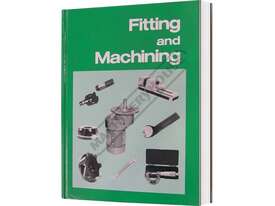
 Facebook
Facebook Twitter
Twitter
 Email
Email
 Print
Print
